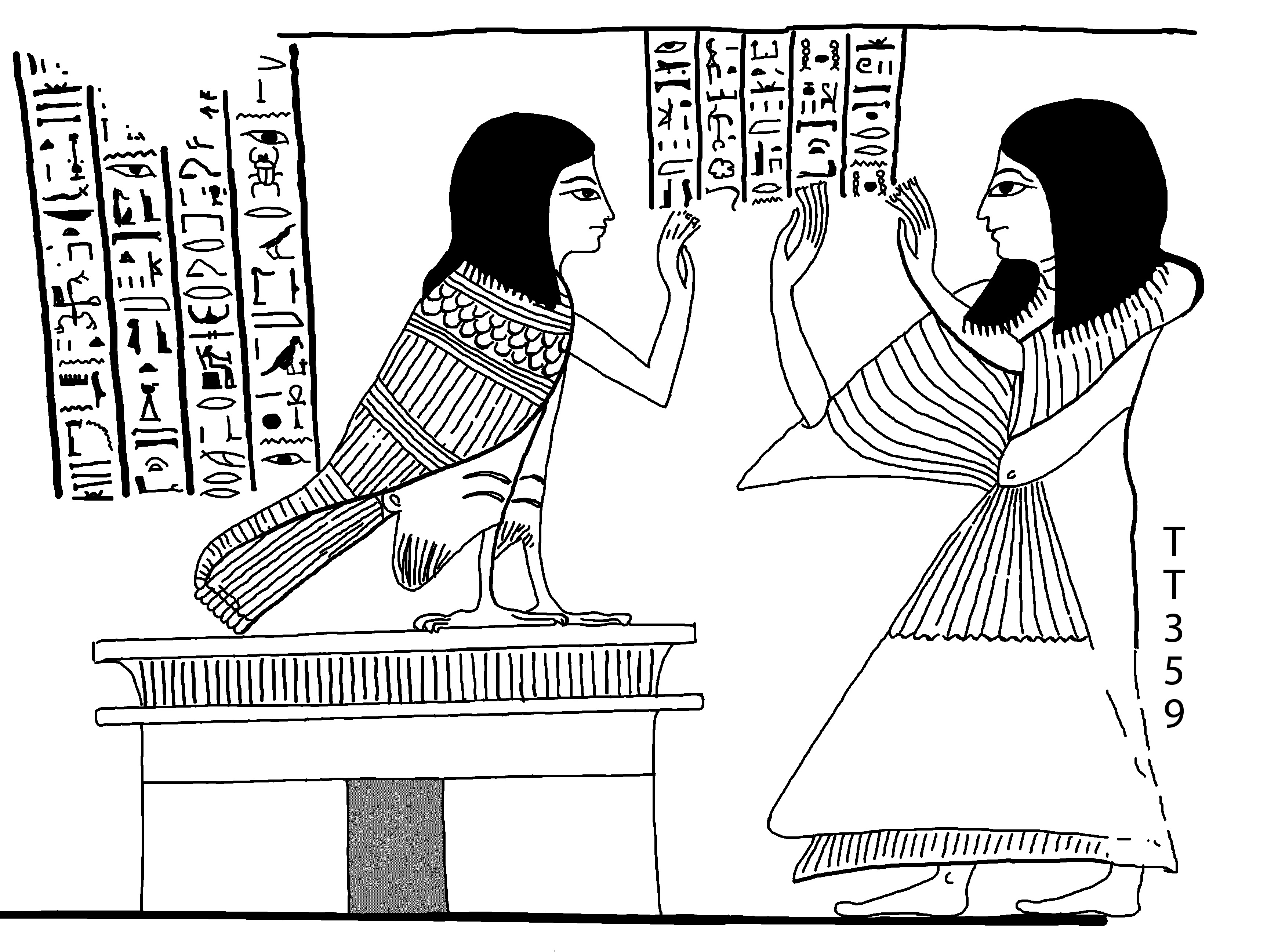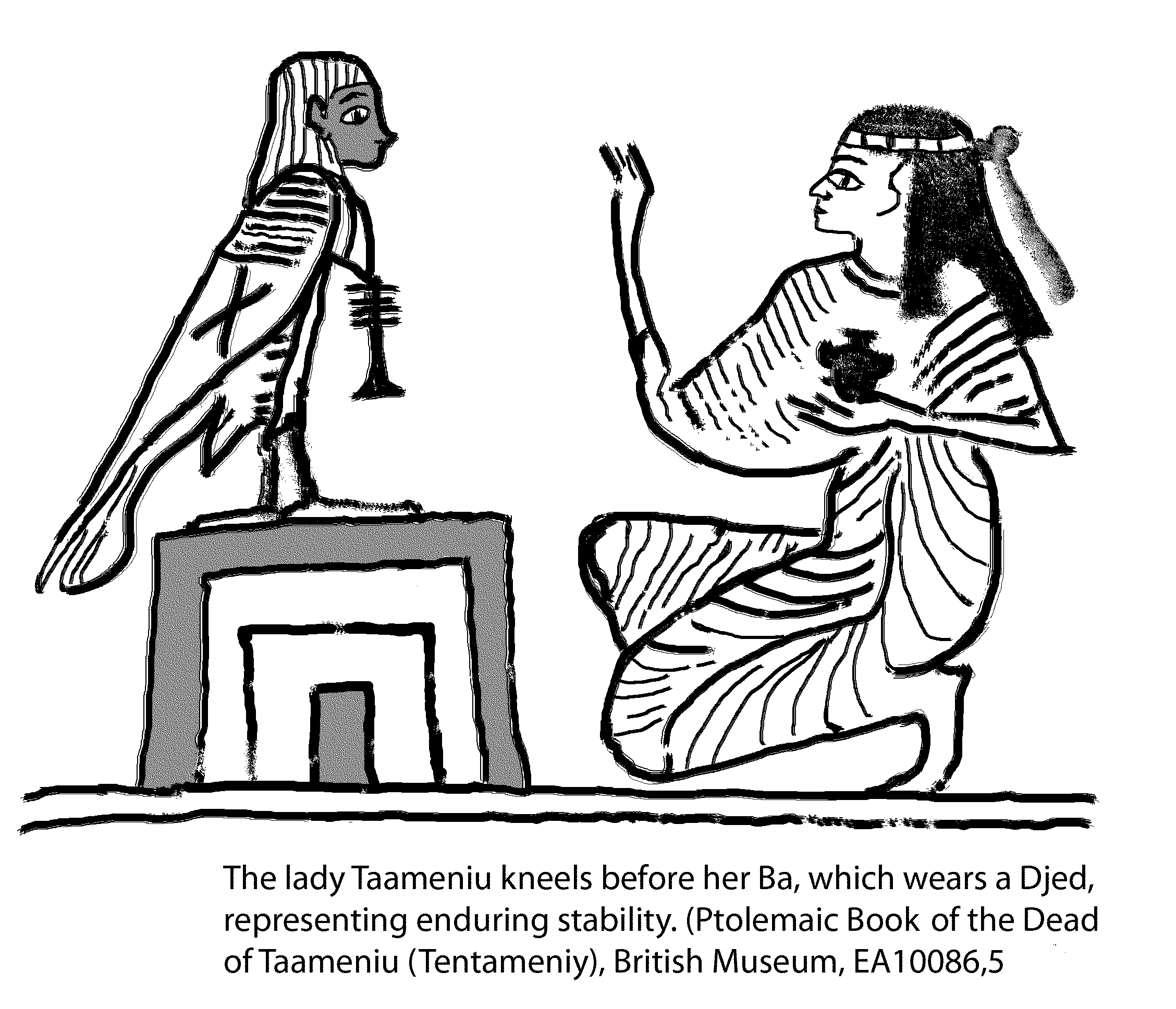
Sunday, April 5, 2015 A
Seti I with Hathor-headed Ba
3:56pm
"The kneeling Seti I offers to Hathor in the form of a Ba-bird.
(Relief in the chapel of Nefertem in the Ptah-Sokar-Osirus area of the Abydos temple." (described by Roberts, page 51)
I found it fascinating and wanted to learn more. Roberts explains
"Plate 40 shows Seti kneeling devoutly before Hathor, 'the female Hawk', who appears in the form of a human-headed Ba-bird. Between the king and the goddess are inscribed the words
Roberts explains, "the Ba represents above all the capacity to appear as a dynamic, living presence and emanate power affecting others." (page 52)
How often has Hathor been depicted as a Ba-bird? Could there be any other meaning beyond what she gives there?
I've found two examples of people who are depicted in an attitude of devotion before a ba-bird, each of these bearing a face resembling the person.
Inherkhau's tomb has one example:
Kent Weeks explains:
Osirisnet.net describes this: "Chamber G, North wall, upper register. The whole register is represented in 4 photographs. Inherkhau raises his arms in adoration before his Ba which stands on his tomb."
The Osirisnet author clearly states this is his own Ba that he is facing and giving the Dua(adoration) gesture.
Another scene of Ba-devotion occurs in the Book of the Dead of Tentameniy:
Alison Roberts describes this: "Vignette from chapter 26 of the Book of the Dead, equaled with the ninth hour of the night. A chapter of the heart, it begins with the words 'May my heart be mine in the House of Hearts'/ Holding her heart, the lady Taameniu kneels before her Ba, which wears a Djed symbol of 'stability', symbolizing her stable existence..." (page 153)
Wearing the Djed expresses her Ba's eternal nature.
Returning to the tomb of Inherkhau, Kent Weeks describes the adjacent scene, "At left, a second scene shows the deceased before Ptah, the god of craftsmen and therefore one greatly praised in Dayr al-Madina. The text that follows at left is a copy of Book of the Dead chapter 42, a list of body parts and the deities associated with them. “My hair is Nun,” one of the rectangles proclaims, “My face is Ra; my eyes are Hathor; my ears are Wepwawet; my nose is She who presides over her lotus leaf.” (Illustrated Guide to Luxor)
This declarative statement type of Heka is frequent in the Book of the Dead texts. The association is of a possessive/transformative nature, "my eyes ARE Hathor".
Could Seti I be adoring his ba, which has become as Hathor? Seti's temple was begun under his rule, and then continued after under his son Ramesses II's rule. One of its many chapels is dedicated "to the deified Sethos I", (Richard Wilkinson, _The Complete Temples of Ancient Egypt_, page 147) ("Sethos" is the Greek way to refer to Seti).
As Seti I was considered to be deified, this makes my hypothesis more possible. At the very least, perhaps Seti's at least acknowledging Hathor as the maker of his Ba? With this creative possibility, She could thereby be able to give "charm and attraction", enabling Seti to better navigate the difficulties of the Duat.
May She give charm and attraction
and the fact that Hathor is shown here as a Ba-bird means that she is understood as dynamically present, manifesting herself in all her vital power before the king." (Roberts, page 52)
(This trace created from a small photo which has all the elements, while referring to a different photo more cropped, but possessing better detail)
"At the beginning of the upper register on the right wall, Inherkhau stands in adoration before a pylon with a human-headed ba bird on top. The bird’s feathers are highly stylized, as are the feathers of the other birds in this tomb, and its face and hands look very similar to those of Inherkhau himself." (From _The Illustrated Guide to Luxor_ by Kent R. Weeks, published by the American University in Cairo Press. Copyright © 2005 White Star S.p.a, as quoted by
luxoregypt.org
The lady Taameniu kneels before her Ba, which wears a Djed, representing enduring stability (Ptolemaic Book of the Dead of Taameniu (Tentameniy), British Museum, EA 10086, sheet 5
Trace created from a scan of Roberts' photo, while referencing one at Museum website.